
How to Transport a Stand Up Paddle Board
Even if you live close to the water you still have to carry your stand up paddleboard. If you don’t live within walking distance, you’ll need to transport it in your vehicle. Learning how to transport a stand-up paddle board (SUP) isn’t difficult but you do want to ensure that the board is secure.
Whether you’re new to paddleboarding or just want a few refresher tips. We’ll show how to carry a paddleboard by its convenient handle. We’ll also cover using straps to secure the board, and how to get it on top of your vehicle.
How to Carry a Stand Up Paddle Board
Your SUP should have a handle in the center. The handle has one purpose. It makes it easy to carry the board from your vehicle to the water and vice-versa.
How to Transport a Stand Up Paddle Board
Whether you’re carrying the board across the sand or heaving it up on a vehicle’s roof, we’ll show you how to do this and more.
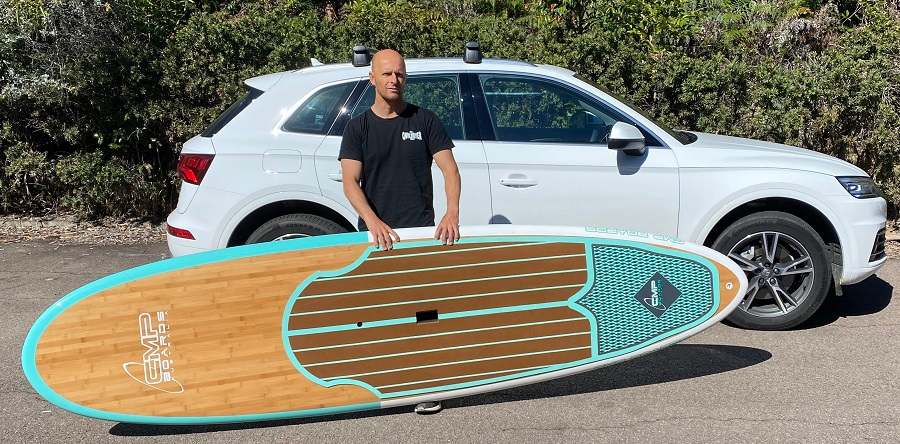
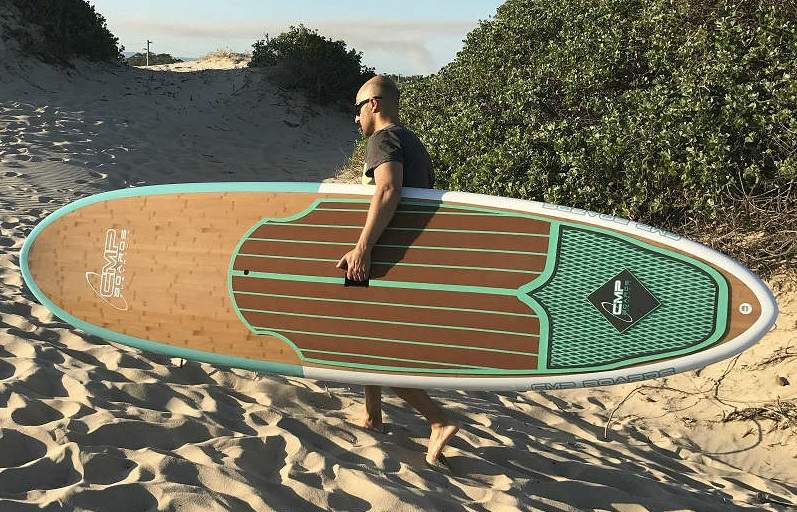
The easiest way is to lie the board on its side, handle facing up. Grab the handle and start walking.
Tips on Carrying a Stand Up Paddle Board
You should already know not to lift heavy objects with your back. Instead, bend at your knees, keeping your back straight, and lift the board as you’re standing up.
If it’s windy, you want to carry the board pointed into the breeze unless it’s the opposite direction of the beach. The board should also be carried on the side of your body that’s downwind. This will make it easier to control the board while you’re carrying it.
You can also use a SUP Trolley to transport the board longer distances. When it comes to carrying the paddle, simply tuck it under the arm you’re using to carry the board. This leaves one hand free.
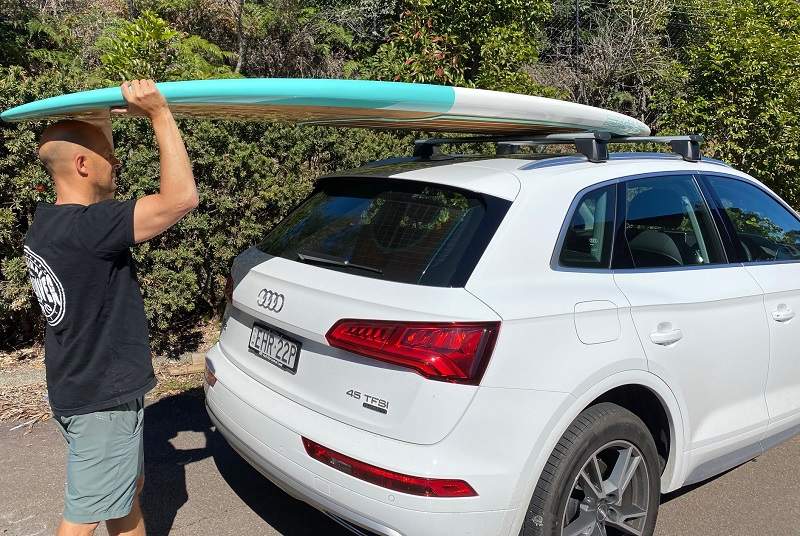
How to Put a Stand Up Paddle Board on a Vehicle
The type of vehicle you drive will determine how you transport the paddleboard. If you drive a pickup ute, the board should fit in the bed with the nose resting against the tailgate.
Not everyone drives a ute or van. Owners of other types of vehicles will need to get a few items before they can safely transport their stand up paddleboard.
If your vehicle didn’t come with factory-installed crossbars, you will have to purchase a kit and have a professional put the rails on.
To secure the board, you’ll need two tie down straps, at least 2 metres long.
Once the crossbars and rack or padding are installed it’s time to slide the board on top of the vehicle. Make sure the straps are within reach, you don’t want the SUP sliding off when you’re looking for them.
It is easier to get the paddleboard on the rack with two people. However, if you’re alone here are a few tips that will make it easier.
If you have a shorter vehicle you’ll want to,
With the board leaning against the car point the fin at the vehicle’s front with the deck facing you.
With one hand grab the upper edge of the board and use the other hand for the handle.
After lifting the SUP onto a knee, move the hand from the handle and grab the board’s edge.
Carefully lift the board up and over your head.
Slide the SUP onto the rack with the deck facing down.
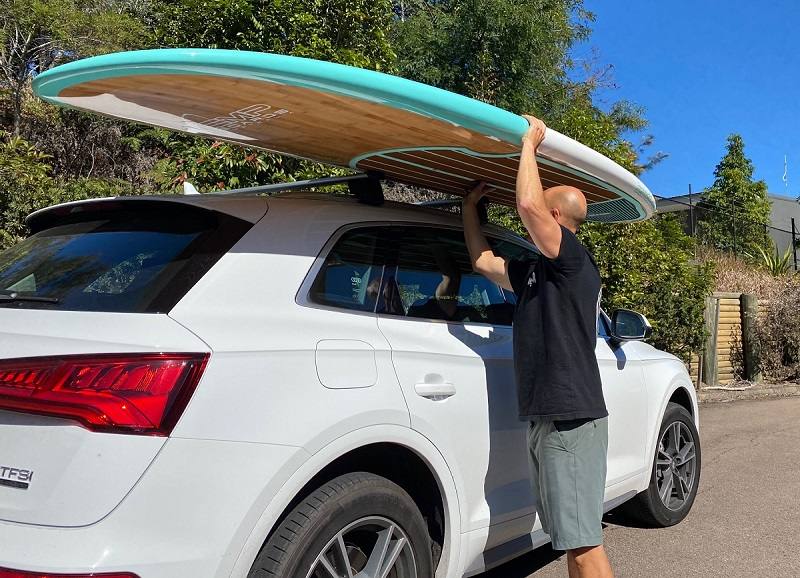
The steps are the same for taller vehicles,
Lay the board with the deck facing down and fin pointing towards the rear of the vehicle.
Use the tail to lift the board up
Slide the board over the rails until it’s in place.
How to Transport a Stand Up Paddle Board

First, don’t leave home without your paddle. If it won’t fit inside the car, you can purchase a special holder that attaches to the rack.
If you’re transporting more than one stand-up paddleboard, the longest one goes on top first. The shortest paddleboard should be on top. This helps to prevent any damage during transport. It also helps to put padding between each of the boards.
Transporting a board in the bed of a ute, just don’t forget to pad the tailgate. You also want to secure the board to prevent it from banging against the walls. Longer boards might stick out over the tailgate. If this happens, consider placing red flags on the tailgate to warn other drivers.
If you’re using ratchet straps here are a few tips on how to secure the board.
The board should be parallel with the car when it’s on the rack with the widest point between the crossbars.
One strap buckle should be at the top of the board and the other at the opposite end.
On the other side of the vehicle, loop the straps underneath the crossbar making sure that it’s the part that’s attached to the roof.
Tighten both straps until the board is secure.
Any excess length from the straps also needs to be tied to the crossbars. This will prevent any slack that can occur due to the vehicle’s movements.
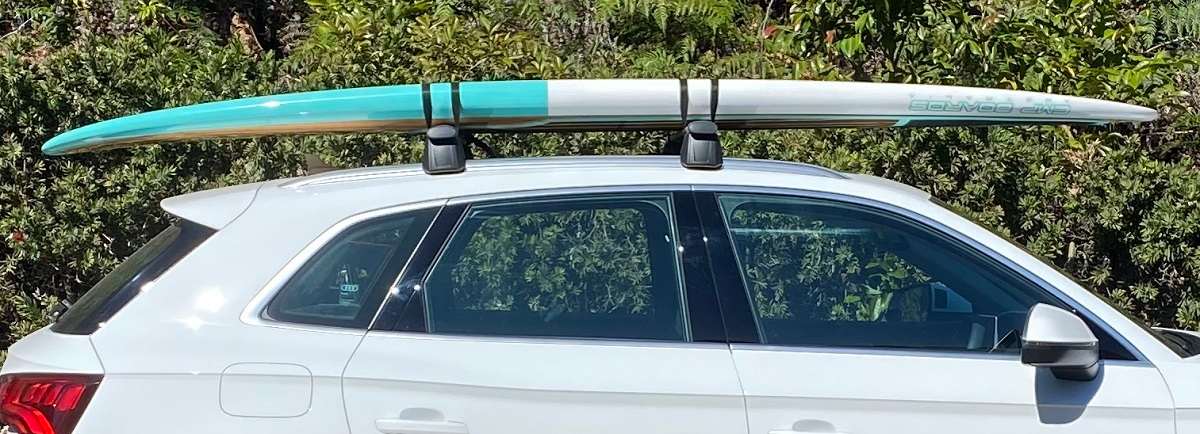
Before hitting the road, give the board a good shake to make sure it is firmly tied down.
Tips on Securing a Paddleboard
Here are a few tips to make it easier to secure your paddleboard.
Use simple knots to secure the straps.
Use a sturdy stepladder if you can’t reach the top of the vehicle.
The widest part of the board should be between the two straps.
Prevent strap vibrations by twisting the cam straps.
Locking straps are ore expensive but provide better security.
Conclusion
Securing and transporting a stand-up paddleboard isn’t difficult, as long as you have the right gear and know-how to use it.
One more helpful tip. If the drive to the water is a long one, pull over periodically to check the straps. It might seem like you’re cutting into your time on the water but if the board falls off en route your day can be ruined.


















